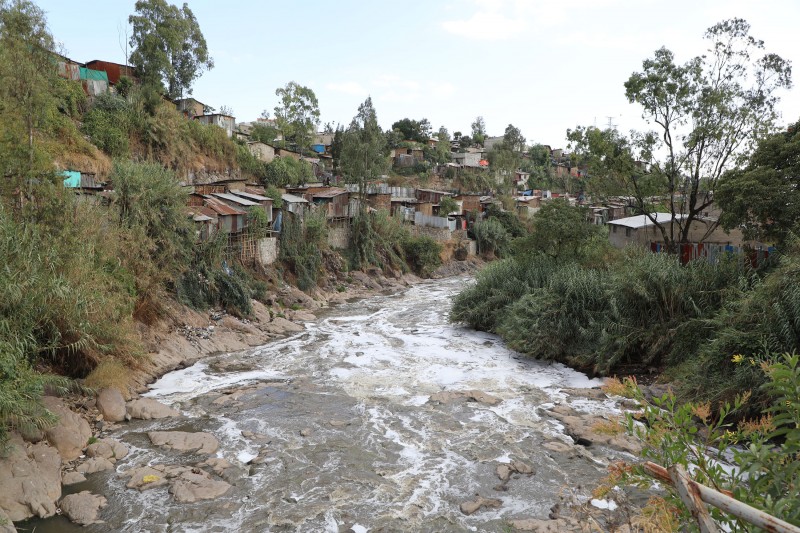Citizen science for integrated water quality action
World Water Day 2023: Accelerating change
17 March 2023

The Abbay River, Ethiopia, during rainy season
Bitew Kassaw and Dessalew Getnet, WLRC
Ethiopia is known as the ‘Water Tower of Africa’. It is a source of transboundary rivers including the Abbay River, the largest tributary of the Nile River. The rivers and water bodies in Ethiopia have diverse features that could greatly benefit sustainable development in the country. However, the potentials are underutilised due to water security problems including shortage, pollution, and poor governance. Clean water is the most common demand of Ethiopians living in both urban and rural areas. The residents of the urban areas have insufficient water for their daily consumption and getting a glass of clean drinking water is a far dream for rural residents. The springs, streams, and rivers in the rural villages are not a source of clean water (a universal human right), but a threat to life due to the prevalence of high pollution and contamination.

Waste from factories, commercial centres, and households pollutes the Little Akaki River, Addis Ababa

A woman fetches water from the river that pollution from Addis Ababa flows into, near to Bole Arabsa Condominium

Residential areas in Addis Ababa have expanded, increasing water pollution for rural people downstream
High rates of water pollution and contamination are a problem everywhere across the country, but are most hazardous in the Upper Awash Basin, mainly in the Little and Big Akaki Catchments where Addis Ababa – Ethiopia’s capital city – is located. The uncontrolled urbanisation, rapid population growth, and unregulated industrial expansion in the area is a threat to river health and water security. Poor waste management by residents and industries is one of the key water pollution causes in the catchments. Solving this problem requires the joint and integrated action of sectors in government, water, health, and academia.

The Hub team are examining the status of the river health of the Little and Big Akaki

Rapid urbanisation and the growth of residential areas have led to an increase in pollution and negative impacts on river health

Factories line many parts of the river banks, with waste from industrial processes being discharged directly into the river water

We are working to address the problem through collaboration and capacity building with stakeholders in the Addis Ababa and Oromia water bureaus, health centres in Addis Ababa, and federal offices (including the Ministry of Water and Energy, Ministry of Industry, and Environmental Protection Authority). For example, WLRC and the Ministry of Water and Energy are working together to build monitoring stations at identified sites along the Little and Big Akaki Rivers.
The Hub are also working with communities to generate water quality data and increase environmental awareness on the ground through citizen science, for example, using the miniSASS tool. MiniSASS is a simple tool that can be used by anyone to monitor the health of a river by collecting, identifying, and scoring the macroinvertebrates found in a sample of the river water. Our data shows that the Akaki rivers are in alarmingly poor ecological state and do not meet the criteria for SDG indicator 6.3.2. This is proving very successful in enabling us to engage schoolchildren in Addis Ababa via extra-curricular Environment Clubs. Through these clubs, schoolchildren assess river health using the miniSASS tool, providing a great opportunity for them to better understand their environment, develop scientific skills, and engage in water security debates.

A miniSASS training and capacity building workshop with stakeholders and citizen scientists

A miniSASS training and capacity building workshop with stakeholders and citizen scientists

A miniSASS training and capacity building workshop with stakeholders and citizen scientists

miniSASS theoretical training and capacity building



